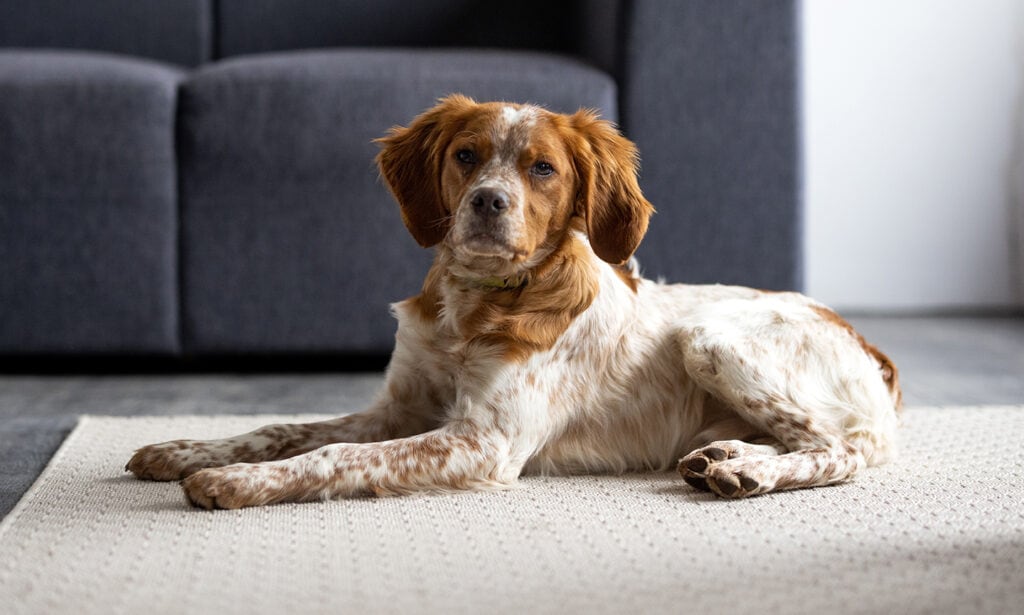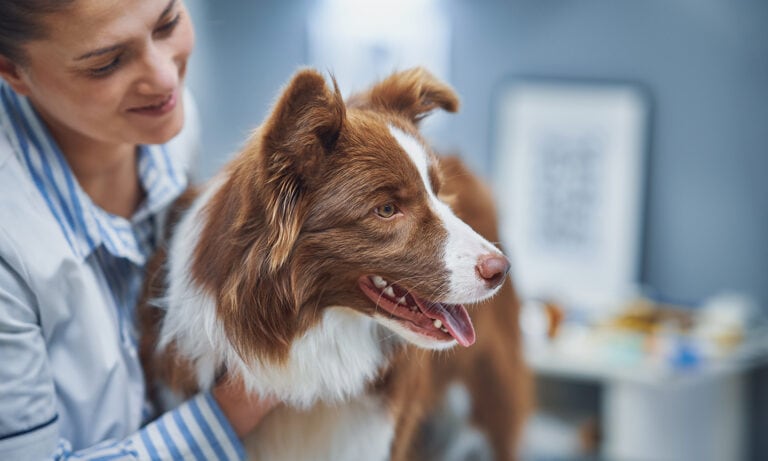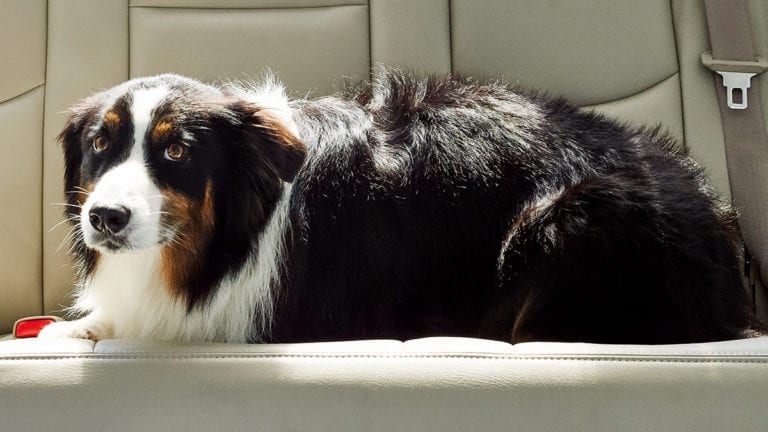Hip dysplasia in dogs is an inherited disease that affects the development of the hip joint. Hip dysplasia occurs when the ball of the dog’s thighbone doesn’t fit inside its socket, and that imperfection causes the joint to become loose and unstable, eventually leading to osteoarthritis.
The disease can appear in any dog but is most common in large or fast-growing breeds, like the Bulldog, German Shepherd, Bloodhound, Boxer, Rottweiler, Saint Bernard and Golden Retriever. Left untreated, hip dysplasia in dogs can cause cartilage loss, inflammation, bone damage and joint spurs.
Signs and Symptoms of Hip Dysplasia in Dogs
The most severe form of hip dysplasia usually surfaces during rapid growth from 4-9 months of age. Symptoms include:
- Limping
- Stiffness
- Pain
- Wobbly gait
- Difficulty getting up
- Difficulty climbing stairs
- Difficulty sleeping
A milder form, which is more difficult to diagnose, appears slowly as a chronic problem later in a dog’s life. Symptoms include:
- Mild, intermittent pain
- Stiffness
- Limited hip motion
If your dog shows these symptoms, take him to your veterinarian to have its hips X-rayed and professionally evaluated.
Treating Hip Dysplasia in Dogs
Holistic veterinarians advocate gentle, nonsurgical methods to prevent or reduce the effects of hip dysplasia and provide natural pain relief for dogs. Follow these steps to treat hip dysplasia naturally.
Diet
Because hip dysplasia develops during growth periods, experts recommend careful dietary management, particularly for susceptible puppies during their first years of life. One study showed that feeding a 24 percent smaller ration to puppies beginning at 8 weeks of age resulted in a 46 percent lower occurrence of hip dysplasia.
What you feed your dog is important, too, says Robert Goldstein, VMD, a holistic veterinarian at the Healing Center for Animals in Westport, Conn. He recommends homemade dog food—raw or cooked—made with organic, whole meats, grains and lots of fresh, antioxidant-rich fruits and vegetables.
“For puppies that are prone to these diseases, supplementing vitamin C during the growth stages has been proven effective in strengthening the connective tissue that holds the joints in place,” Dr. Goldstein says, adding that “Water is essential for keeping the joints working.”
Be sure to talk with your veterinarian about a diet that’s appropriate for your dog.
Moderate Exercise
Boisterous play, particularly on hard surfaces, can aggravate dysplastic joints. Keep your pup from doing any kind of jumping or sustained activity until he is 1 year old. Thereafter, avoid activities involving strenuous jumping or sudden momentum changes.
Swimming, which puts little stress on the joints, is recommended, as is moderate exercise and controlled physical therapy to strengthen and maintain muscle tone.
“Strive for gentle, steady exercise on a forgiving surface,” Dr. Goldstein says. “Exercise improves the dog’s circulation and gets his ‘juices’ flowing, which is essential for managing joint disease.”
Alternative Therapies
Acupuncture, homeopathy, therapeutic massage and chiropractic treatments may provide natural pain relief for dogs and relieve inflammation, pain and stiffness, Dr. Goldstein says. Holistic veterinarians are most likely to turn to acupuncture because it seems to slow joint degeneration, even in severe cases.
“Acupuncture is especially effective in older and aging animals suffering from degenerative joint conditions like hip dysplasia in dogs,” Dr. Goldstein says. “It helps reduce pain, and the needles stimulate the acupoints to release and redirect blocked energy.”
Acupuncture and massage also increase circulation throughout the body, Dr. Goldstein says. A chiropractor can readjust the spine and other bones that may have been thrown out of balance by limping, favoring one leg or other attempts to relieve the pain.
Anti-inflammatory herbs may be helpful, as well, he says. For specific usages and dosages, check with a veterinarian or herbalist who has experience using herbs on animals.
Joint Medicine for Dogs
The most successful alternative treatments appear to be dog supplements that stimulate the body to lubricate the afflicted joint and rebuild damaged cartilage. Holistic veterinarians often prescribe shark and bovine cartilage, glucosamine, chondroitin sulfate, proanthocyanidin, super oxide dismutase and glycosaminoglycans to relieve inflammation, nourish the cartilage and increase the joint lubrication fluid, which reduces pain and inflammation.
“Glucosamine and chondroitin are the two keys to healing—the building blocks for healthy joint tissue and repair,” Dr. Goldstein says. “Glucosamine builds joint cartilage and helps maintain joint fluid thickness and elasticity. Chondroitin works with glucosamine to increase mobility in the joints, acting like a ‘fluid magnet.’”
He suggests using a glucosamine/chondroitin combination, like Nutramax’s Cosequin Maximum Strength chewable tablets. In addition, your veterinarian may recommend a joint medicine for dogs that combines helpful herbs, vitamins and other supplements.
If you are concerned that your puppy or dog might develop hip dysplasia, have a professional organization evaluate your dog’s hips. Thanks to natural products and alternative therapies, you can ease the crippling effects of hip dysplasia.
Share:










